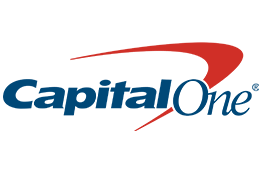Used Car Financing: The Best Way To Get a Used Car Loan
- Shopping around for a car loan can save you over $5,000.
- You can apply for an auto loan directly with a single lender or get offers from several lenders using an online marketplace.
- Used car loan rates are typically higher than new car rates, but monthly payments are lower because used cars have lower purchase prices.
How to get a used car loan
1. Set a budget
Before you start applying for a used car loan, decide how much car you can afford with a car affordability calculator.
Then, use a car payment calculator to compare what you can afford with the monthly payments you’d make on the car you want to buy. You can find the average price of the car you want on used car websites. Just make sure to factor in all of the costs of owning a car when deciding what will fit in your budget.
Down payment: 10% (or more) of the purchase price for a down payment
Fees: 8% – 10% of the purchase price for dealer fees
Insurance: Average of $2,101 a year for full-coverage insurance
Gas/fuel: Average of $2,449 a year according to the U.S. Bureau of Labor Statistics
Maintenance: Average of $1,160 a year for car maintenance and repairs
2. Gather your documents
Before you apply for your used car loan, make sure your documents are in order. Common documents required for a car loan include:
- Proof of identity, like your driver’s license, passport or U.S. visa
- Proof of income, like a pay stub, W-2 or bank statement
- Proof of residence, like a lease, mortgage or utility bill
- Car title and registration if you’re trading in your current car
Many dealers require you to show insurance documents before you drive off the lot. Take the time to find affordable used car insurance before going to the dealership.
3. Shop around for a loan
One of the biggest mistakes you can make when financing a used car is to only apply with one lender. Check your rates with several lenders to make sure you’re getting the best deal.
Start by going to multiple lenders to get prequalified, or make the process easier by using a loan marketplace like LendingTree. If you qualify, you’ll get offers from up to five lenders at once by filling out a single form.
Prequalification typically involves a soft credit check that won’t affect your credit score, but offers are just an estimate. Go one step further by submitting applications for preapproved car loans. Preapproval requires a hard credit check, but it more accurately portrays the final offers you’ll receive. As long as you apply within a two-week period, all applications will count as only one hard credit pull.
You’re likely to save a huge chunk of change by considering your options. Shopping around for the best car loan rate on LendingTree can save you an average of $5,198.
Used car lenders
| Lender | Starting annual percentage rate (APR) | Loan terms | Loan amounts | Minimum credit score | |
|---|---|---|---|---|---|
 | 5.59% | 24 to 84 months | Starting at $4,000 | 500 | |
 | 5.49% (with discounts) | Up to 84 months | Up to 130% of the car’s value | Not specified | |
 | 4.00% | 12 to 84 months | Up to $100,000 | 600 |
Capital One
Why we picked it: Capital One offers car loans with low starting rates. You can customize your loan term to be short or long, depending on your needs and budget. And Capital One approves borrowers with scores as low as 500, so you may be able to snag a bad credit car loan.
Restrictions:
- Eligible dealerships: Car must be from a dealership that partners with Capital One
- Model year: 10 years or less (some exceptions apply for certain older vehicles)
- Miles: 120,000 – 150,000 or less
- Credit score: 500+
Digital Federal Credit Union (DCU)
Why we picked it: While many lenders charge higher rates for used car loans, DCU advertises loans with the same low interest rates for used and new cars. DCU also offers rate discounts if you make eligible electronic payments or are financing a fully electric car.
Restrictions: You must be a DCU member to take out a loan. To join, you must open a DCU savings account with a deposit of at least $5 and meet one of the following requirements:
- Live, work, worship or go to school in certain Massachusetts communities
- Work for a participating employer
- Join a participating association (annual dues between $10 and $120)
Southeast Financial Credit Union (SFCU)
Why we picked it: Outside of having ultra-low starting rates, Southeast Financial Credit Union offers car loans with no model year or mileage restrictions. Some lenders don’t offer private-party car loans, but SFCU does — and you won’t pay higher interest rates, either.
Restrictions: You must have a credit score of at least 600 to qualify for an auto loan. You also need to join the credit union before you can borrow.
All SFCU members must open a savings account with a deposit of at least $5. To become a member, you must meet one of the requirements below:
- Make a $5 donation to Autism Tennessee
- Be a current employee or retiree of a Southeast Financial Select Employee Group
- Be related to a current SFCU member
- Live, work, worship or go to school in certain parts of Tennessee, Kentucky or Mississippi
Two of our three picks for used auto lenders come from credit unions, and that’s no coincidence. Credit union auto loans tend to come with low APRs, so it’s worth taking the time to check your car loan rates with a credit union.
Expect higher rates, but lower monthly payments
Lenders take on more risk by loaning you money for an older vehicle. Used cars are more likely to have mechanical issues or break down entirely. Lenders charge higher rates to make up for the additional risk.
Even though rates tend to be higher for used cars, monthly payments are lower on average when compared with new car payments. That’s because used cars tend to be cheaper, so people borrow less when they buy a used car.
| Average used car loan interest rate | Average used car loan monthly payment | Average amount borrowed for used car loan | |
|---|---|---|---|
| New cars | 6.61% | $737 | $41,068 |
| Used cars | 11.74% | $520 | $26,091 |
Data from Experian’s State of the Automotive Finance Market.
Expert advice on used car loans
“Auto loan rates have fallen in recent months, thanks to rate cuts from the Federal Reserve, but that trend may end. The Fed has stopped rate cuts for now.” – Matt Schulz, LendingTree chief credit analyst
If you plan to buy a car soon, don’t wait for lower rates. There’s no guarantee that used car interest rates will go down in the coming months. Plus, rate changes tend to be small, so you probably won’t save a lot by waiting to get a loan even if the Fed does cut rates.
Before you check out your potential new ride, know what to look for when buying a used car. And if you’re buying from a dealership, brush up on used car laws to make sure you’re not getting the short end of the stick.
Frequently asked questions
It can be. Used cars are cheaper and have lower monthly payments on average, helping you save money on transportation costs.
But you’ll need to do your own research to avoid buying a lemon. At the very least, do a VIN check and get a professional used car inspection before you sign anything. If you want to improve the chances that your ride is road-worthy, look at certified pre-owned cars that have been vetted by the manufacturer and come with extended warranties.
There are several ways you can get a lower car payment. You can borrow less by making a bigger down payment or countering sales tactics at the dealership.
You can also add a cosigner with a good or excellent credit history, which will likely lower your rates and improve your odds of qualifying.
If you’re really strapped for cash, consider leasing a used car. You can get lower monthly payments, but you won’t own the car once the lease is over.
The average loan term for used cars is around 67 months according to Experian, but choosing a shorter car loan term can help you save thousands on interest payments. Experts recommend car loan terms of no more than four years (48 months).
But you can stretch out your car payments as long as 84 months with some lenders, and doing so is one way to get lower monthly car payments. Just remember you’ll owe more in interest with a longer loan term.
Get auto loan offers from up to 5 lenders in minutes
Read More
Auto Loan Payment Calculator Updated April 2, 2025 Use our auto loan payment calculator to estimate your monthly car loan payment based on…Read More
Car Buyers Could Save $5,198, on Average, By Shopping Around for Best Auto Loan Rate Updated March 20, 2023 Prospective buyers who shop around could save an average of $5,198 by choosing the offer…Read More

